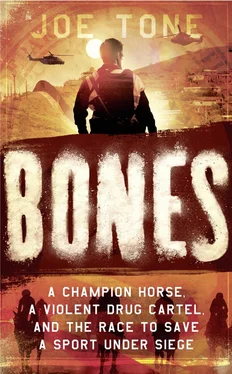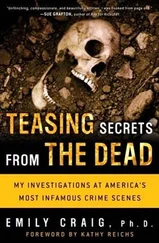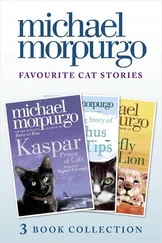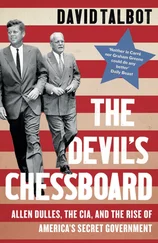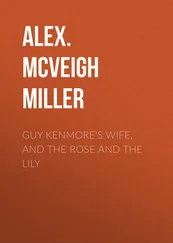The resulting horses were, as one quarter-horse historian described them, “small, [with] alert ears, a well-developed neck, sloping shoulders, short deep barrel, a great heart girth, heavy muscled in thigh and forearm, legs not too long, and firmly jointed with the knee and pastern close.” They were rarely taller than fifteen hands *but could reach twelve hundred pounds. (Thoroughbreds are lither, averaging sixteen hands but just a thousand pounds.) The new breed of horse was even better on the farm and unbeatable in a rodeo ring or on the track, provided the track wasn’t longer than a quarter mile. They called him the American Quarter Horse.
By the 1940s, an industry had sprung forth around the breed. In Texas, a group of cowboys founded the American Quarter Horse Association, to manage and regulate breeding and competition. In New Mexico and California, businessmen pushed for pari-mutuel betting, allowing racetracks to collect the bets and manage the payouts. That lured horsemen and gamblers from Texas, Oklahoma, and Mexico for weekends spent drinking and betting on the races, which could now feature six or eight horses instead of two.
The quarter-horse meccas built in the 1940s and ’50s still anchor the sport today, especially Ruidoso Downs, in the mountains of New Mexico, and Los Alamitos, in the palm-studded suburbs of Orange County, California. They host futurities, for two-year-old racehorses, and derbies, for three-year-olds, with millions on the line. And on any given day, at tracks sprinkled across the Southwest and Mexico, quarter horses as old as five, six, even seven run races with a few grand on the line and a few hundred people in the stands.
The best of these horses are descendants from American Quarter Horse royalty—sired by name-brand stallions like First Down Dash, Corona Cartel, or Mr Jess Perry. They’re ridden by jockeys who often learned to ride in unsanctioned match races in the countryside of Texas, Oklahoma, or Mexico. Many of the best are Mexican immigrants.
The races typically cover between 350 and 440 yards. The best feature a little bumping out of the gate and all the way through the finish line. The fastest 440-yard races are run in about 20 seconds, compared to the two minutes it takes the top thoroughbreds to circle Churchill Downs. The short track leaves little time to overcome a stumble. The horses are loaded up, rearing and kicking up dust, and everything goes still. The gates fly and and the race is already almost over. The horse that best taps into its English-Spanish-Mexican-Tejano cow-pony DNA has the advantage, using its hulking haunches and quiet demeanor to go from dead still to full speed in a few strides.
Now maybe you can see it, even if you’ve never seen it: stocky horses raised by cowboys, racing on short tracks, ridden by jockeys trained in the thick brush of cow country, all a safe distance from the floppy-hatted dignitaries of the Jockey Club. They call thoroughbred racing the sport of kings? This is the sport of cowboys. Muddle your mint elsewhere.
CHAPTER TWO
BLOODLINES
POMONA, CALIFORNIA
December 2008
The calculations started as soon as Ramiro’s loafers shuffled into the barn, kicking dust particles into the crinkles of the cowboys’ boots. As his eyes adjusted to the dark, Ramiro’s brain started receiving dispatches about what he was seeing: thick haunches, hinged backs, steep shoulder slopes, and all the other variables that make the difference between racehorse and runner . There were some runners in the barns this morning. That was the only takeaway from a stroll through here, some babies that would be blazing down the track by spring.
It was winter in Pomona, one of the dozens of suburbs splayed east of Los Angeles that everyone’s heard of but few have visited, a kissing cousin to Covina and Pasadena. Ramiro was born, raised, and still lived in Monterrey, the industrial heartbeat of northeastern Mexico. But he spent a lot of time traversing these suburbs in rental cars. He went to the track in Los Alamitos for the races, the stud farm in Bonsall to buy breedings, private ranches, public auctions, and anywhere else he might find a quarter horse worth studying. This particular suburb was home to the Barretts auction house, where the final quarter-horse auction of 2008 was about to get started.
It was a small sale, 160 head, compared to 500 or even 1,000 at bigger auctions. Ramiro’s particular interests made it feel even smaller. He bought mostly yearlings, one-year-old horses that would hit the tracks as two-year-olds the following year. He also targeted weanlings, which hadn’t yet turned one, as well as embryos and foals still in utero, counting on the strength of their genetics alone.
This sale would feature a mix of all kinds of quarter horses, including foals, weanlings, yearlings, stallions, and broodmares. Still, Ramiro had reason to be excited. The Schvaneveldt Winter Mixed Sale, as this auction was called, was run by the family of one of the sport’s winningest trainers, Blane Schvaneveldt, and had attracted horses from the best bloodlines in the business. It was also a new venture, so attendance was sparse. That meant less competition on the way to the gavel.
Ramiro moved through the barns, peering through the metal bars of the stall doors. He made small talk in his choppy English with the other horsemen milling about—trainers looking for their next champions, breeders hoping to make a big sale. They were some of the best in the business. Ramiro knew them all.
They knew him, too. They knew him by various nicknames, including “the Horseman” and “Gordo,” which they recognized as the Spanish word for “fat.” It made sense, given the way his cheeks and midsection curved like birthday balloons, pushing his five-foot-nine frame over 250 pounds. But at thirty-five years old, Ramiro was handsome , too, with eyes that played puppeteer to an electric smile, hair that crashed like a Malibu wave, and polo shirts in every color of Ralph Lauren’s rainbow. He was a fresa —a “strawberry,” a preppy—through and through.
Most of the quarter-horse cowboys knew Gordo by his real name, José Ramiro Villarreal Guajardo. Even if Ramiro didn’t exactly fit in—if his loafers seemed impractical, his polos a little bright for this hour, his double-fisted cellphones more than a little obnoxious—Ramiro knew the sellers welcomed the sight of him. He could be a pain in their asses when it came time to collect, and the old cowboys occasionally had to remind Ramiro just how Ford Tough they were. But Ramiro knew—everyone knew—that when the auctioneer started bellowing his gibberish, Ramiro was welcome here. Especially these days.
The Great Recession was grinding toward its thirteenth month. Home prices were in a free fall. A drought was ravaging Texas and other parts of the West, driving up hay prices. That meant the wealthy ranchers, oilmen, and businessmen who drove the quarter-horse industry were doing what wealthy people did in historic droughts and capital-R recessions: selling their planes and selling their horses. Sale prices were falling. A mixed sale like the Schvaneveldts’ averaged ten thousand dollars per horse in a good year; this year might only average six thousand.
That was bad news for the Schvaneveldts but good news for brokers like Ramiro. He was buying not for himself but for horsemen back in Mexico, who trusted him to pick out well-bred babies and haul them back across the border. He never said who his buyers were; they were “Mexican businessmen” and nothing more. He could safely assume that everyone in the barns knew what kind of business those Mexicans were in. But the industry didn’t care, so long as Ramiro kept showing up to spend his clients’ money.
Читать дальше
